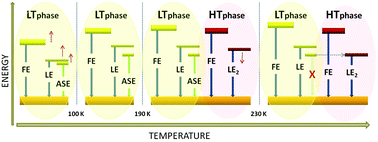Amplified spontaneous emission in thin films of quasi-2D BA3MA3Pb5Br16 lead halide perovskites
Abstract
Quasi-2D (two-dimensional) hybrid perovskites are emerging as a new class of materials with high photoluminescence yield and improved stability compared to their three-dimensional (3D) counterparts. Nevertheless, despite their outstanding emission properties, few studies have been reported on amplified spontaneous emission (ASE) and a thorough understanding of the photophysics of these layered materials is still lacking. In this work, we investigate the ASE properties of multilayered quasi-2D BA3MA3Pb5Br16 films through the dependence of the photoluminescence on temperature and provide a novel insight into the emission processes of quasi-2D lead bromide perovskites. We demonstrate that the PL and ASE properties are strongly affected by the presence, above 190 K, of a minor fraction of the high temperature (HT) phase. This phase dominates the PL spectra at low excitation density and strongly affects the ASE properties. In particular, ASE is only present between 13 K and 230 K, and, at higher temperatures, it is suppressed by absorption of charge transfer states of the HT phase. Our results improve the understanding of the difficulties to obtain ASE at room temperature from these quasi-2D materials and are expected to guide possible materials improvement in order to exploit their excellent emission properties also for the realization of low threshold optically pumped lasers.



 Please wait while we load your content...
Please wait while we load your content...